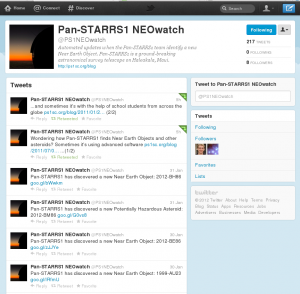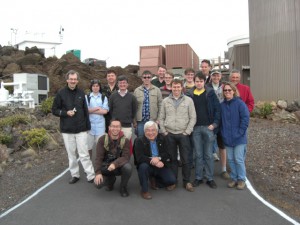Tweeting NEOs
February 3rd, 2012 by ps1scblogFrom today onwards you can see tweets of new Near Earth Objects identified by Pan-STARRS1. Follow @PS1NEOwatch for updates of new PS1 NEOs. If you want to know more about how PS1 finds asteroids then why not check out the following blog posts.
MOPS: Finding things that go bump in the night where Larry describes how advanced software helps Pan-STARRS identify rocks that could come very close to the Earth.
School students find hundreds of potential new asteroids with PS1 where Will Burgett outlines work being done by school students across the globe to identify new asteroids.










